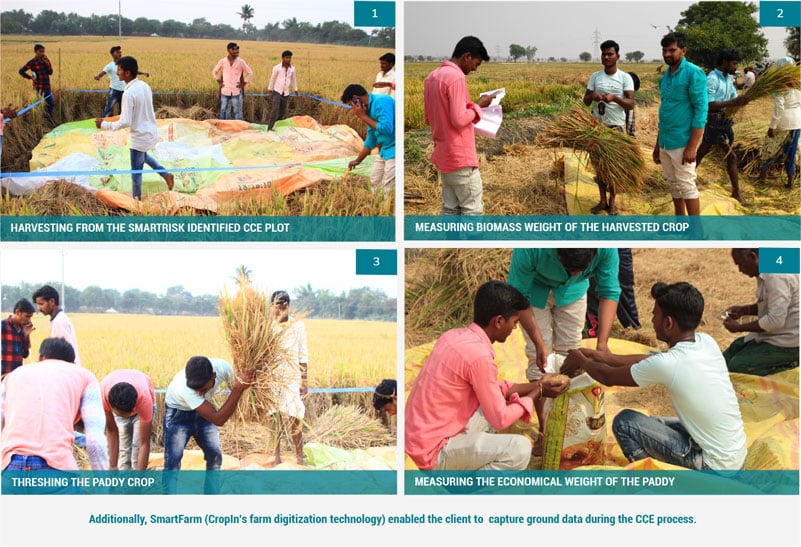Editor's note: This post was originally published in February 2019 and has been updated for accuracy and comprehensiveness.
Agricultural producers globally are prone to unpredictable risks of all kinds. One of the predominant factors that disrupt agricultural food production globally is natural disasters. These shocks to the agri-food systems, including droughts, floods, wildfires, cyclones, and the recent pandemic, have only become more intense and frequent, causing recurring damage and destruction. On the one hand, these adversities affect yields and prices and, consequently, the growers' profits and rural livelihoods. On the other, they disrupt value chains and threaten global food security and stability.
Between 2008 and 2018, billions of dollars were lost as a result of declines in crop and livestock production in the aftermath of disasters.
-
USD 30 billion was lost in sub-Saharan and North Africa
-
USD 29 billion was lost in Latin America and the Caribbean
-
USD 8.7 billion was lost across the Small Island Developing States (SIDS) in the Caribbean
-
USD 49 billion was lost in Asia
Source: FAO
One way for these producers to reduce their exposure to these risks is to purchase crop insurance.
An agriculture insurance plan protects producers against crop losses due to weather-related or natural calamities or revenue losses due to market price fluctuations. It also de-risks lending to the agri sector, enabling farmers to repay their loans besides offering several other benefits.
Crop Insurance Scheme in India: Pradhan Mantri Fasal Bima Yojana
In April 2016, the Government of India launched its nationwide crop insurance scheme known as Pradhan Mantri Fasal Bima Yojana (PMFBY). The agriculture insurance scheme is one of the world's largest, providing risk coverage for millions of Indian farmers.
A noteworthy feature of PMFBY is that it encourages the use of modern technology, such as satellite imagery, remote-sensing technology, drones, artificial intelligence, and machine learning, to accelerate crop loss assessments.
Yield Estimation Using Crop Cutting Experiments
These advanced technologies are beneficial in estimating crop yields efficiently, too. Typically, the yield data is arrived at through crop-cutting experiments or CCEs. It refers to an assessment method that governments and agricultural bodies employ to estimate crop yield for a given cultivation cycle in the region.
The traditional method of CCE is based on the yield component method where sample locations are selected based on a random sampling of the total area under study. From these locations, samplers harvest the crop from a specified size and shape of the plot (square, rectangle, triangle, or circle based on the crop). The harvest is then collected and analyzed for several parameters, such as biomass weight, grain weight, moisture, and other indicative aspects, to estimate the final yield per hectare. The data gathered from this study is extrapolated to the entire region to provide a reasonably reliable assessment of the average yield output of the area.

The data gathered from CCEs is beneficial to multiple stakeholders in the agricultural value chain. While the government can use it to plan sector-related policies and programs, insurance providers can leverage this information to customize insurance products for the crop or region based on actual performance data. It also enables them to verify claims before settling them.
Challenges in Executing Crop-Cutting Experiments
Under the PMFBY, the states must execute at least four CCEs for each crop in every village panchayat (or council) and submit the yield data to the insurance companies within one month of harvest. The biggest shortcoming of the traditional approach to CCE is that it is dependent on many variables such as administrative setup, type and size of the field staff, farmer cooperation, and harvest conditions.
Especially in a scenario where there are nearly 2.5 lakh village councils in India, executing innumerable CCEs within a narrow harvest window and limited staff proved challenging. There needs to be a more efficient way of utilizing the available resources and obtaining an accurate yield estimation within the short harvesting window.
Technology-Backed Smart Sampling
In 2019, smart sampling was first introduced by the scientists at the Mahalanobis National Crop Forecast Centre (MNCFC) of the Ministry of Agriculture and the Indian Space Research Organisation (ISRO) through nine pilot studies in 23 districts across 11 states.
Compared to the traditional method of CCE using random sampling, the use of remote sensing and other technological advancements provides a far more accurate and timely estimation of yield.
For the Rabi season in 2019, the Central government partnered with Cropin for a pilot study with objectives in mind:
-
Optimization of crop-cutting experiments to make them more accurate, swift, and scalable
-
Implementation of a robust and self-managed claim dispute resolution mechanism for a speedy resolution of claim disputes
Creating An Impact with Cropin Digital Solutions
Cropin Intelligence is an AI- and ML-powered digital solution that uses satellite imagery and proprietary crop detection models to identify the plots most suitable for these experiments. A dedicated and highly-skilled data science team analyzes millions of data points to determine the farm plots that will provide the most accurate sample for the region.
On the day of the experiment, samplers use Cropin Grow, a farm data management app, to capture the precise location and size of the farm plot and the details of the farmer and the crop. Capturing this data using SmartFarm creates an easily accessible digital record and ensures that the field data is accurate.
The benefits of technologically-aided CCEs are not limited to choosing the fitting samples for the study. Besides offering a more optimized approach to sampling, digital solutions also provide the stakeholders with scientific, scalable, and accurate reports for future processing.
How Do The Stakeholders Benefit From The Digital Intervention
The use of data and technology in agriculture has a far-reaching impact on the Agri ecosystem and enables more efficient and accurate decision-making throughout the cultivation cycle. The smart, technology-enabled approach toward CCE provides many benefits.
-
Government: The application of technology addresses the issue of conducting a large number of CCEs with a limited workforce during a short harvesting window. Using a digital platform such as Cropin's reduces paperwork and subsequent possibilities of human error. Additionally, Cropin provides trained field managers to oversee the process and gather the required data on the digital app, thus reducing the burden on the samplers. With the help of these scientific methods, the government can improve overall efficiency by utilizing its resources in the best possible way.
-
Insurance companies: The data provides a more accurate yield estimate for the crop in question and allows for the timely settlement of claims in a more just manner. The reports derived using Cropin’s platform are data-driven and accurate. Hence, it eliminates the possibility of fraudulent claims or inaccurate payment disbursals. It also allows insurance companies to customize crop insurance schemes and products based on real-time data gathered from the region.
-
Farmers: Digitalization of the CCE process enables fair settlement of claims. It cuts down the stress on the farmer to provide proof of their claims, thereby also reducing the effort and time spent in the process.
Cropin recently participated in a Nigerian government project where our deep-learning models for yield estimation enabled the Flour Milling Association of Nigeria (FMAN) and other stakeholders to estimate wheat cultivation in northern Nigeria. Read more here.










